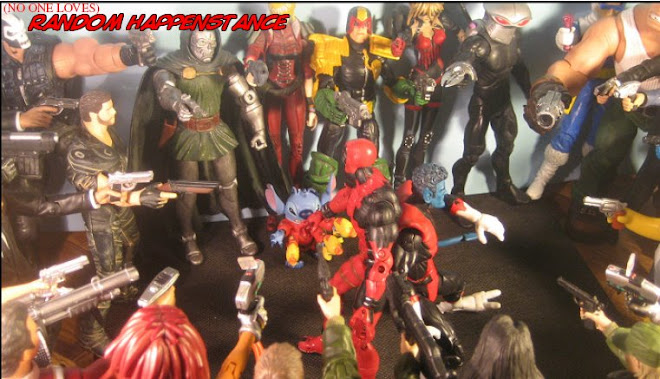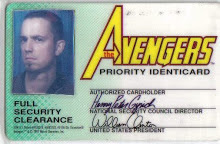
Man, when even Larfleeze has checked out, you know it's over! From 2016, Justice League 3001, "Cancelled!" Written by Keith Giffen and J.M. DeMatteis, pencils by Colleen Doran, inks by Timothy Green II.

If there's an unintentional theme to this year's batch of last issues here, it's last issues that steadfastly refuse to wrap up anything. Part of that may be wishful thinking--if we leave it open-ended, maybe reader hue and outcry will bring us back!--and part may be stubbornness: we're not cancelled, you are! Or maybe there wasn't enough time to drop plotlines and finish up. I may be guessing, because while I know I read other issues of this series--we had seen the last issue of the previous one some time back--it's tough to parse through.
So, the titular Justice League were in fact clones, created by "Wonder Twin" scientists Teri and Terry Magnus: actually, they may have been less clones than people genetically re-engineered to emulate the classic team's powers and mindset. Their goal was to defeat the evil Commonwealth and their rulers, the Five--who were in fact led by Terry. Teri goes on to become the Flash, and Terry is Eclipso at this point. Suffice to say, they aren't close. Some other heroes had turned up as well, particularly Supergirl, who may or may not be the original; and some Giffen/DeMatteis favorites like Blue Beetle, Booster Gold, Fire, Ice, and Guy Gardner. The latter of whom was a woman now. The Legion of Super-Heroes may also all be dead, and the JL3001 was still fighting evil versions of the Legion here, which is also not finished. Series big-bad Lady Styx, who was Teri and Terry's mother, decides Teri was a threat to her empire, and her plan to handle her wasn't quite ready, so to take her off the board she sends Teri and 'Batgirl' (an overenthusiastic wannabe with a Robin outfit) back to the 21st century! "To be continued...?" Not yet, anyway.

All told there would've been something like 28 issues between JL3000 and JL3001, and I feel like there was even more going on that was never necessarily given any sort of conclusion. There was an evil (or at least, aggressively pissed-off) Lois Lane, Sinestro working at a strip club, G'Nort and Larfleeze, who knows what else. I know I have a chunk of those issues, but am torn between eyeballing the quarter bins for the rest, or worrying that then I'd get into to it and this cancellation would really sting.
Read more!

















































